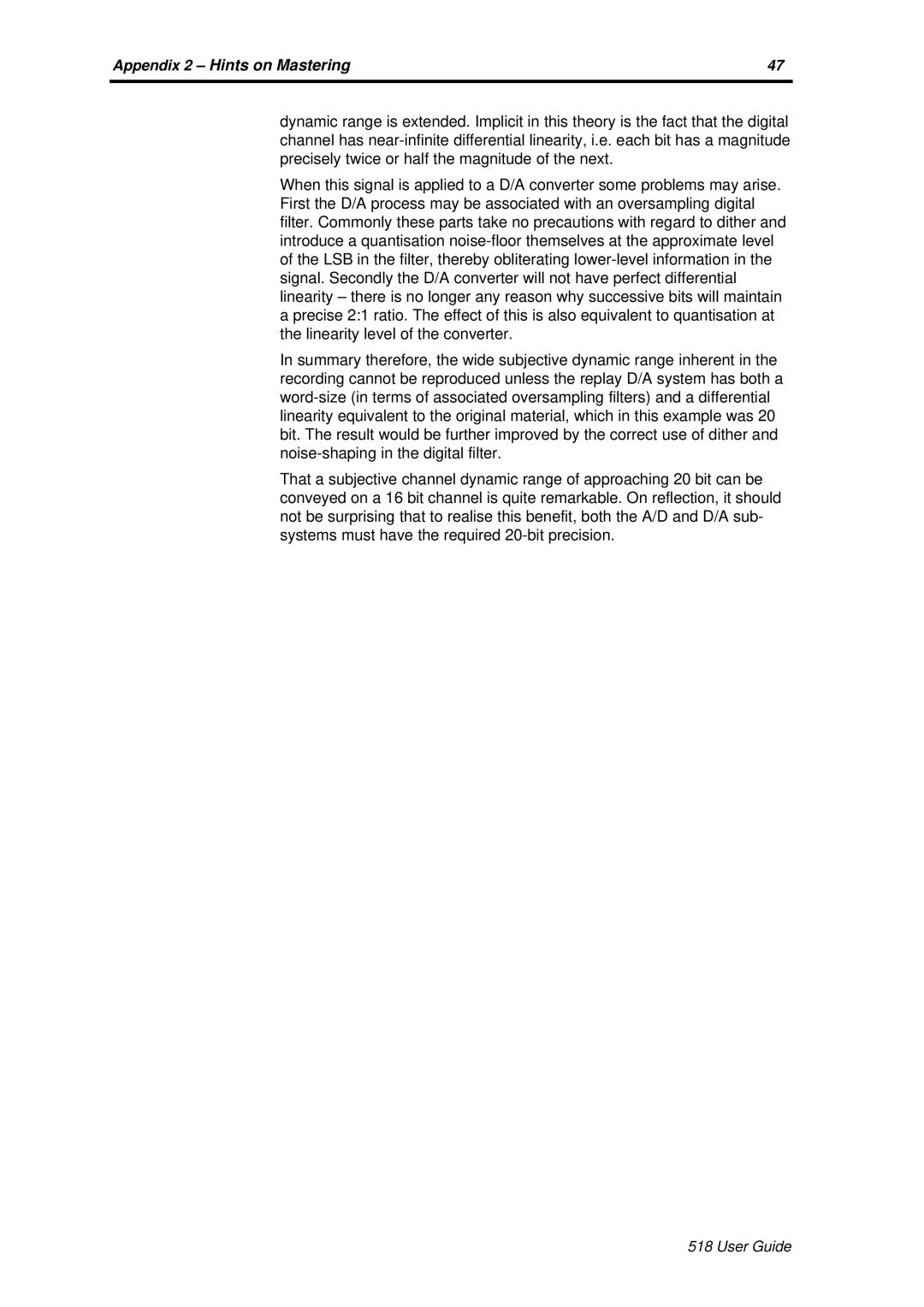Appendix 2 – Hints on Mastering | 47 |
|
|
dynamic range is extended. Implicit in this theory is the fact that the digital channel has
When this signal is applied to a D/A converter some problems may arise. First the D/A process may be associated with an oversampling digital filter. Commonly these parts take no precautions with regard to dither and introduce a quantisation
In summary therefore, the wide subjective dynamic range inherent in the recording cannot be reproduced unless the replay D/A system has both a
That a subjective channel dynamic range of approaching 20 bit can be conveyed on a 16 bit channel is quite remarkable. On reflection, it should not be surprising that to realise this benefit, both the A/D and D/A sub- systems must have the required
518 User Guide
